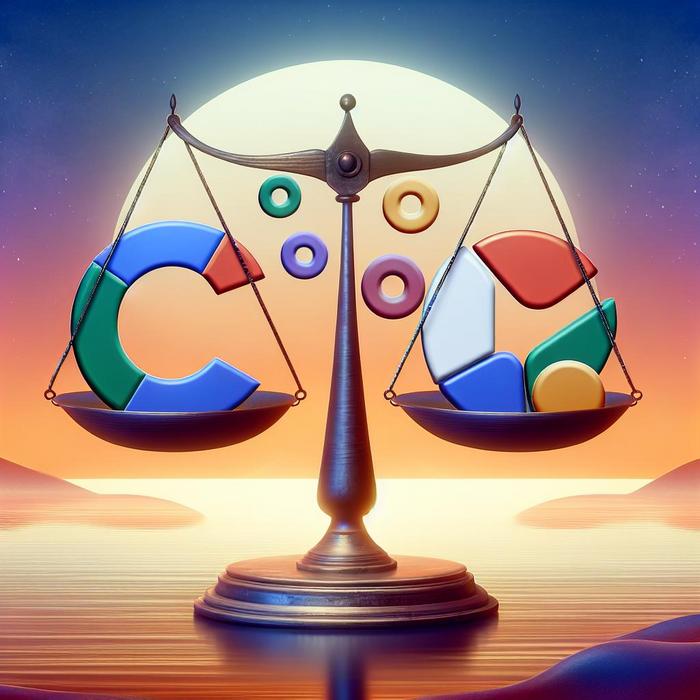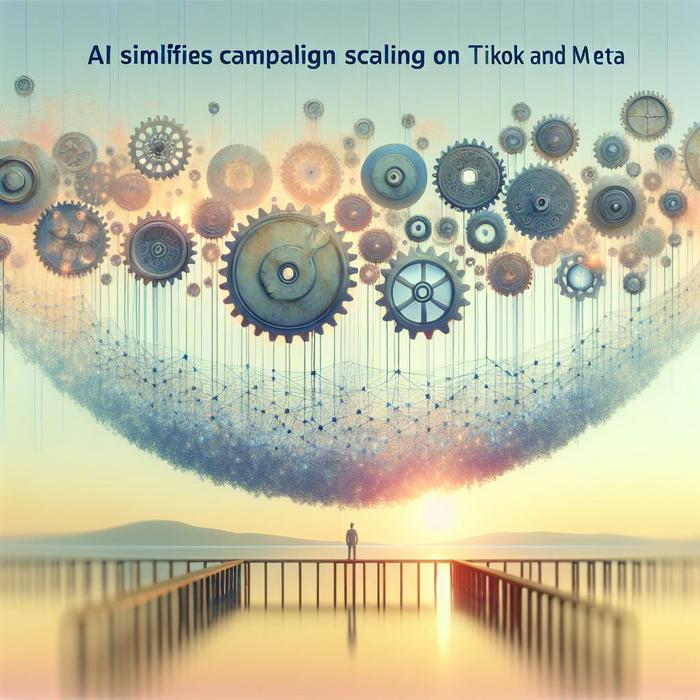Dissecting Ad Efficiency: Google Ads and TikTok Ads Battle it Out
As strategic leaders in the business world, CMOs, CFOs, CEOs, and others within the C-suite rely heavily on actionable insights, innovative strategies, and tangible results to drive business growth. One area that remains a critical focus in the digital marketing landscape is efficiently optimizing advertising campaigns. This entails employing smarter, result-oriented methods to achieve the best possible returns from your ad spend.
Google Ads: The Established Champion
Google Ads has long been the preferred choice for many executives seeking to bolster their digital marketing efforts. Its extensive search network, coupled with its sophisticated targeting options, has made it a popular choice among marketers. But what truly sets Google apart is its ability to cater to various business types and industries, offering broad campaigns for the masses or highly targeted ads to specific demographics.
TikTok Ads: The Emerging Contender
On the other hand, TikTok Ads is fast gaining popularity in the digital marketing landscape. With its unique appeal to younger demographics and creative, engaging ad formats, TikTok offers a refreshing change from traditional online advertising platforms. However, some professionals remain skeptical about the platform’s effectiveness. For instance, discussions here and here showcase mixed results reported from marketers.
Head-to-Head: Comparing Ad Efficiency
When comparing Google Ads and TikTok Ads, it’s crucial to reflect on the longevity and reputation of Google, against the novelty and growing user base of TikTok. Here are several key factors to consider:
1. User base: Google has an extensive user base, reaching billions of people globally. Conversely, TikTok’s user base, while smaller, is extremely engaged, spending an average of 52 minutes per day on the platform.
2. Targeting Capabilities: Google’s sophisticated audience targeting options allow for highly specific ad placements. Meanwhile, TikTok is still refining its targeting capabilities, but offers unique features like interest-based targeting.
3. Market Competition: As a more established platform, advertisers may face stiff competition on Google, leading to higher cost-per-click rates. Alternatively, TikTok, being new, presents less competition but also an uncharted landscape to navigate.
4. Ad Formats: Google offers a range of ad formats, from text-based search ads to visual display ads. TikTok, however, provides a more limited range, with a heavy focus on video content.
So, which is more efficient?
It depends. The choice between Google Ads and TikTok Ads isn’t a one-size-fits-all decision. The more appropriate platform depends heavily on your business type, target audience, and campaign objectives. Is your target audience predominantly Gen Z and Millennial? TikTok could be a perfect fit. Do you want a wide reach with more format options? Google might be your best bet.
Embracing Multichannel Advertising
One important insight that many successful CMOs, CFOs, and CEOs have embraced is that a singular focus on any one platform can limit the potential of their digital marketing strategy. Instead, understanding the core strengths of each platform and integrating them into a cohesive, multichannel advertising strategy can help drive more substantial, meaningful results. For instance, this discussion on Reddit and this guide showcase the real potential of integrating different platforms.
Ultimately, the key to efficient ad optimization lies in understanding your target audience, aligning your ad strategies to meet your business objectives and continually testing and improving your approach. Efficient advertising isn’t a standalone pursuit; it’s an integrated strategy that leverages the strengths of individual platforms to attain business growth. And of course, always keep in mind that your objectives should be measurable, as this is the very essence of digital marketing strategies.
Strategic Insights and Tactics Enable Optimal Allocation of Ad Spend
When it comes to investing in advertising, decision-makers should always remember that each channel has unique strengths and potential pitfalls. Analyzing these attributes can unveil optimal methods to drive customer acquisition, engagement, and ultimately, increased Return On Investment (ROI).
For example, the immortal behemoth Google presents a diverse range of ad formats, resulting in numerous strategies to consider. Utilizing precise targeting features can optimize ad engagement and drive down the cost-per-click, thus securing substantial savings for a substantial campaign. Additionally, the Google Display Network offers fantastic opportunities for retargeting ads, which is an efficient strategy for keeping your brand on the radar of potential customers and achieving high conversion rates.
On the flip side, TikTok’s youthful, energetic user-base presents unbridled opportunities for brands wishing to reach this demographic. A carefully curated TikTok ad campaign, rich in creativity and flair, can go a long way in capturing the attention of this demographic and enhancing brand affinity. Notably, TikTok’s unique ad format is tailored to this audience’s consumption habits, propelling conversions and boosting brand recognition.
Emerging Technologies: Harnessing the Power of AI and Machine Learning
Taking a glance at the horizon of ad tech, a new wave of technology is rapidly evolving the advertising landscape, particularly Artificial Intelligence (AI) and machine learning. Both Google and Meta have pioneered in their use for advertising purposes. AI-based approaches fare well in parsing vast amounts of usage data and identifying subtle patterns that human analysis might miss. For instance, Meta’s Value Optimization tools leverage machine learning to predict the ad behavior that drives the most profit, helping advertisers account for ad spend more accurately.
The Power of Diversification in Ad Strategy
Just like investing in a stock market, the secret to triumphant ad strategies often lies in diversification. Spreading ad investment across different platforms can mitigate risks associated with fluctuations in platform performance. Providing a multichannel experience also ensures more touchpoints with your audience, enhancing presence and brand recall among consumers, and ultimately stimulating conversion.
Taking into account the ad potential of platforms like Google Ads and TikTok Ads, a diversified ad strategy would involve a combination of these platforms, each catering to a unique demographic and offering distinct benefits. In the grand scheme, platforms like Google and TikTok are only pieces of the puzzle. Decision-makers would do well to explore more marketing landscapes like Meta, Amazon, and LinkedIn, which all have unique capabilities. An insightful read lays out the factors to consider when weighing Google and TikTok ads.
Minding Success Metrics and Continuous Improvement
Whether you decide to go with Google Ads, TikTok Ads or a combination of both, implementing the best strategies requires continuous monitoring of key performance indicators (KPIs), to facilitate fine-tuning and optimization. It’s imperative that these KPIs align with the overall business goals and objectives. This type of feedback loop ensures businesses can quickly respond to campaign results, fine-tune strategies, and ultimately ensure the ad spend is securing a healthy ROI, which would reflect the company’s strategic targets.
The Final Word
To conclude, advertising presents numerous opportunities for top executives to drive brand awareness, customer engagement, and revenue growth. With continuous advancements in ad tech and the increasing prominence of machine learning tools, it’s an exciting time to be in the digital marketing field. The endless quest for innovation and growth in this space underscores the fact that effective ad campaign optimization is an evolutionary process, constantly adapting to changing market dynamics, technologies, and consumer behavior. Understanding and remaining responsive to these factors will be key to achieving sustained advertising success.










Interesting breakdown between Google and TikTok Ads. Exploring unique features of TikTok like interest-based targeting could be intriguing. Considering a multi-channel strategy might maximize those conversion peaks. Keeping an eye on those KPIs is key!
monitoring the optimization score, conversion rate and click-through rate would definitely give a better insight into how campaigns are working on various platforms.
monitoring user intent along with conversion rate can provide insights on improving ad relevance and thus, efficient campaign optimisation.